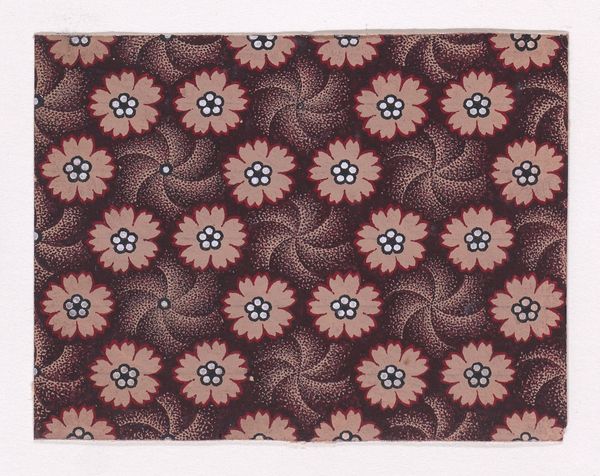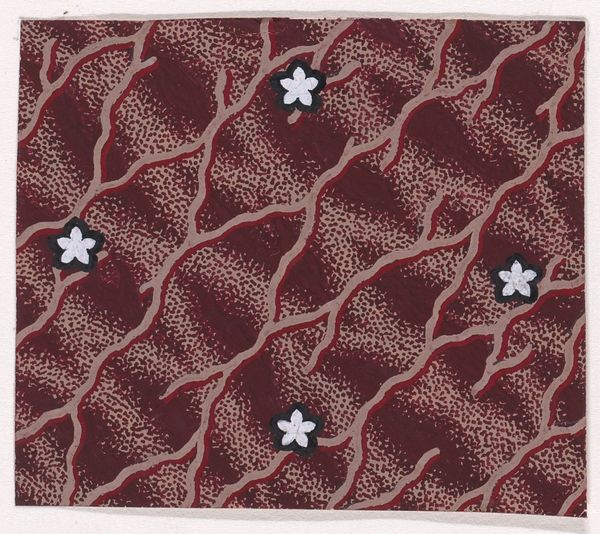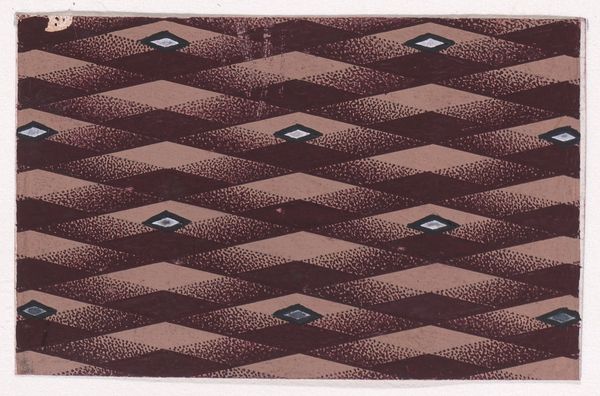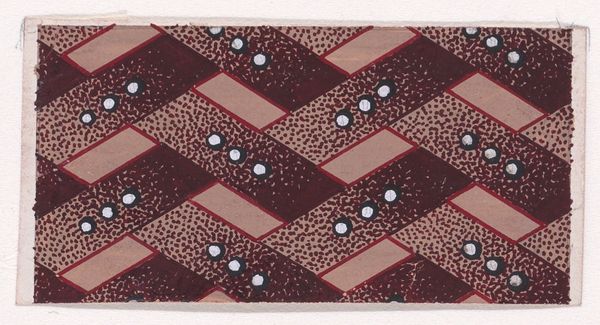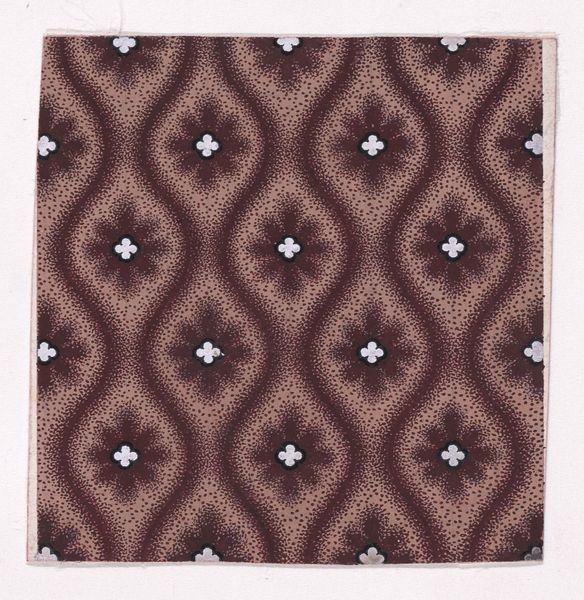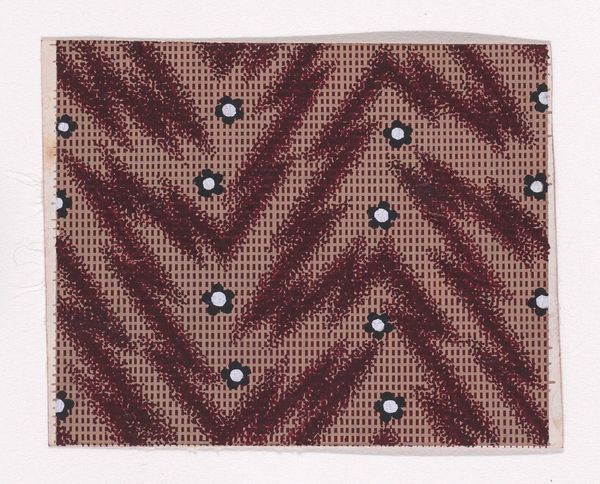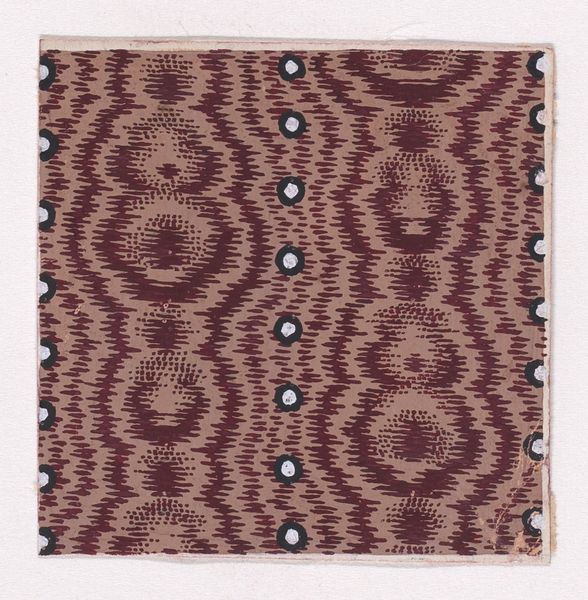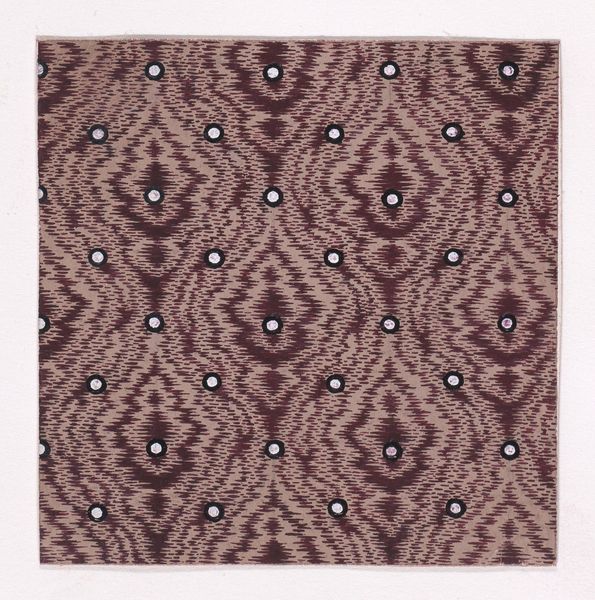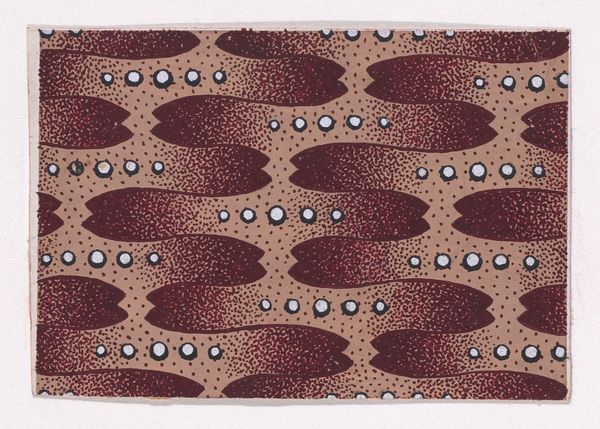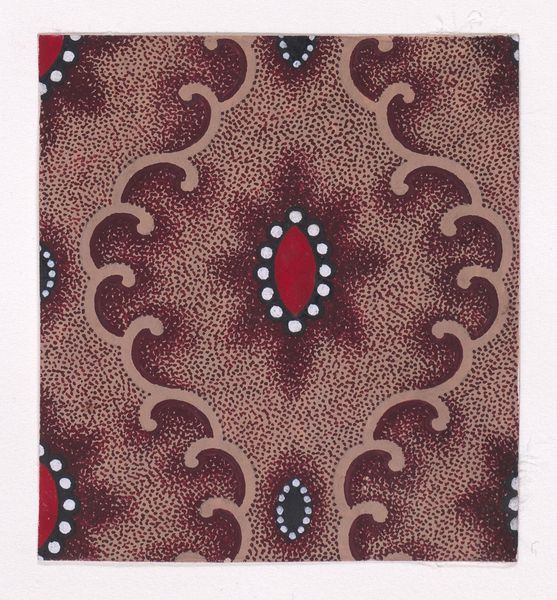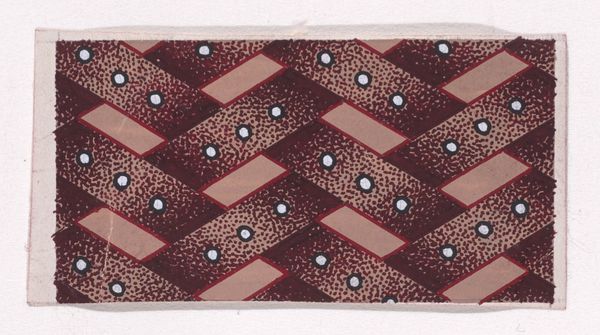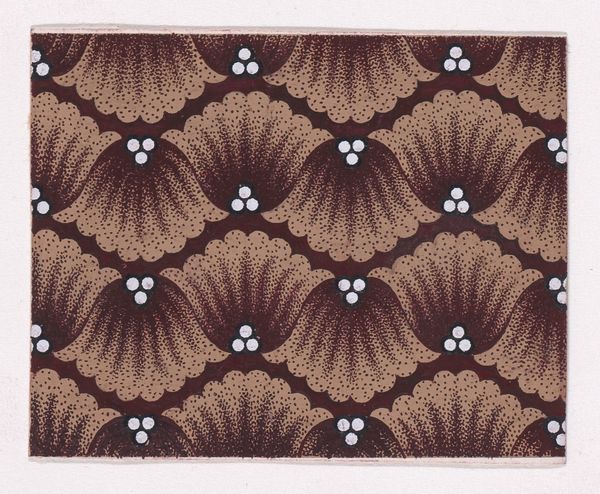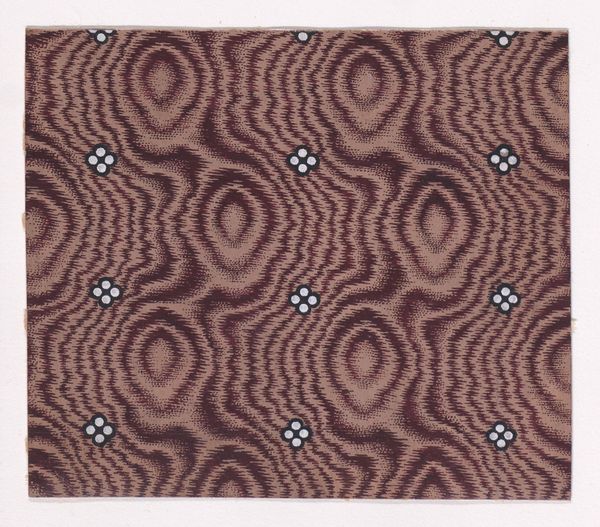
Textile Design with a Seamless Pattern of Alternating Triangles Decorated with Pearls 1840
0:00
0:00
drawing, print, textile
#
drawing
#
natural stone pattern
# print
#
pattern
#
textile
#
geometric pattern
#
abstract pattern
#
repetitive shape and pattern
#
organic pattern
#
geometric
#
repetition of pattern
#
pattern repetition
#
imprinted textile
#
layered pattern
#
organic texture
Dimensions: Sheet: 1 13/16 × 2 1/4 in. (4.6 × 5.7 cm)
Copyright: Public Domain
Curator: So, here we have an anonymous textile design from 1840 titled "Textile Design with a Seamless Pattern of Alternating Triangles Decorated with Pearls" currently held at the Metropolitan Museum of Art. It's made with drawing and print techniques on textile. It's an interesting piece, isn't it? Editor: It is! I’m really struck by how meticulously repetitive the pattern is. It feels very orderly, but also a bit…flat? What stands out to you the most? Curator: I'm drawn to the textile itself and the implied labor involved in its potential production. Think about the materials available in 1840. The means of reproducing such a pattern repeatedly on fabric speaks volumes about the era's industrial capabilities, even in what appears to be a simple design. The “pearls” appear somewhat… inconsistent in placement and design. Does this perhaps speak to a certain tension between idealized, mass-producible pattern and human, possibly less skilled, application? Editor: That's fascinating, I hadn’t considered that contrast between machine and human input. It does raise questions about the perceived value of ‘flaws’ and who exactly might have been tasked with this kind of work. So the piece is anonymous: does that impact how we read it from a materialist point of view? Curator: Absolutely. Anonymity further emphasizes the focus on the object and its production rather than individual genius. The labor behind it becomes foregrounded. Who made this? Under what conditions? The lack of a named artist pushes us to consider the broader social and economic systems at play. It ceases to be about individual expression, but about a particular moment in the history of textile production, of materiality and consumption. Editor: I see what you mean. Focusing on those often-overlooked aspects definitely provides a richer understanding of this seemingly simple pattern. Thanks! Curator: It's precisely those overlooked aspects that offer the most fertile ground for understanding art within a broader social and material context. Glad to share my perspective.
Comments
No comments
Be the first to comment and join the conversation on the ultimate creative platform.
